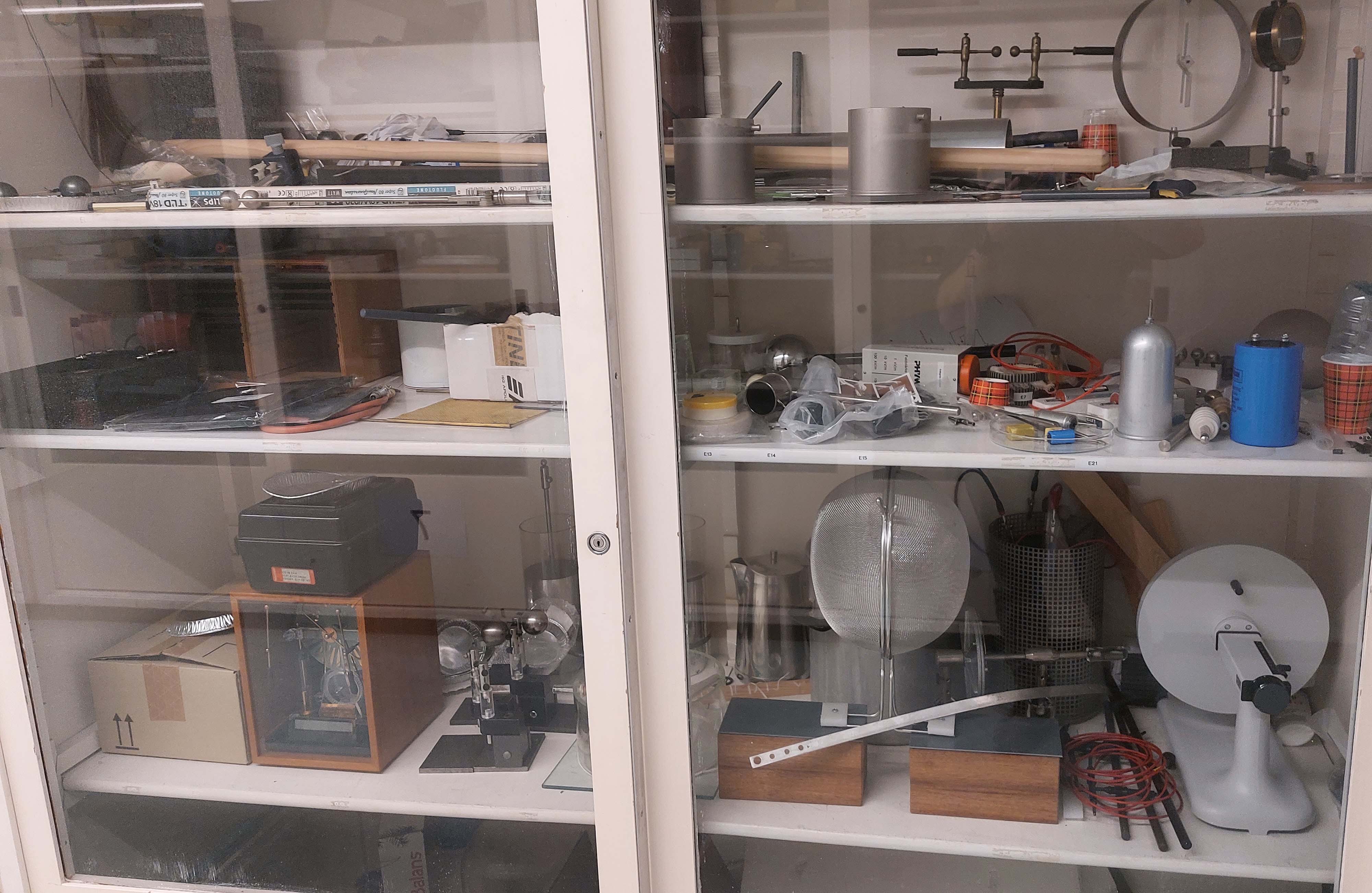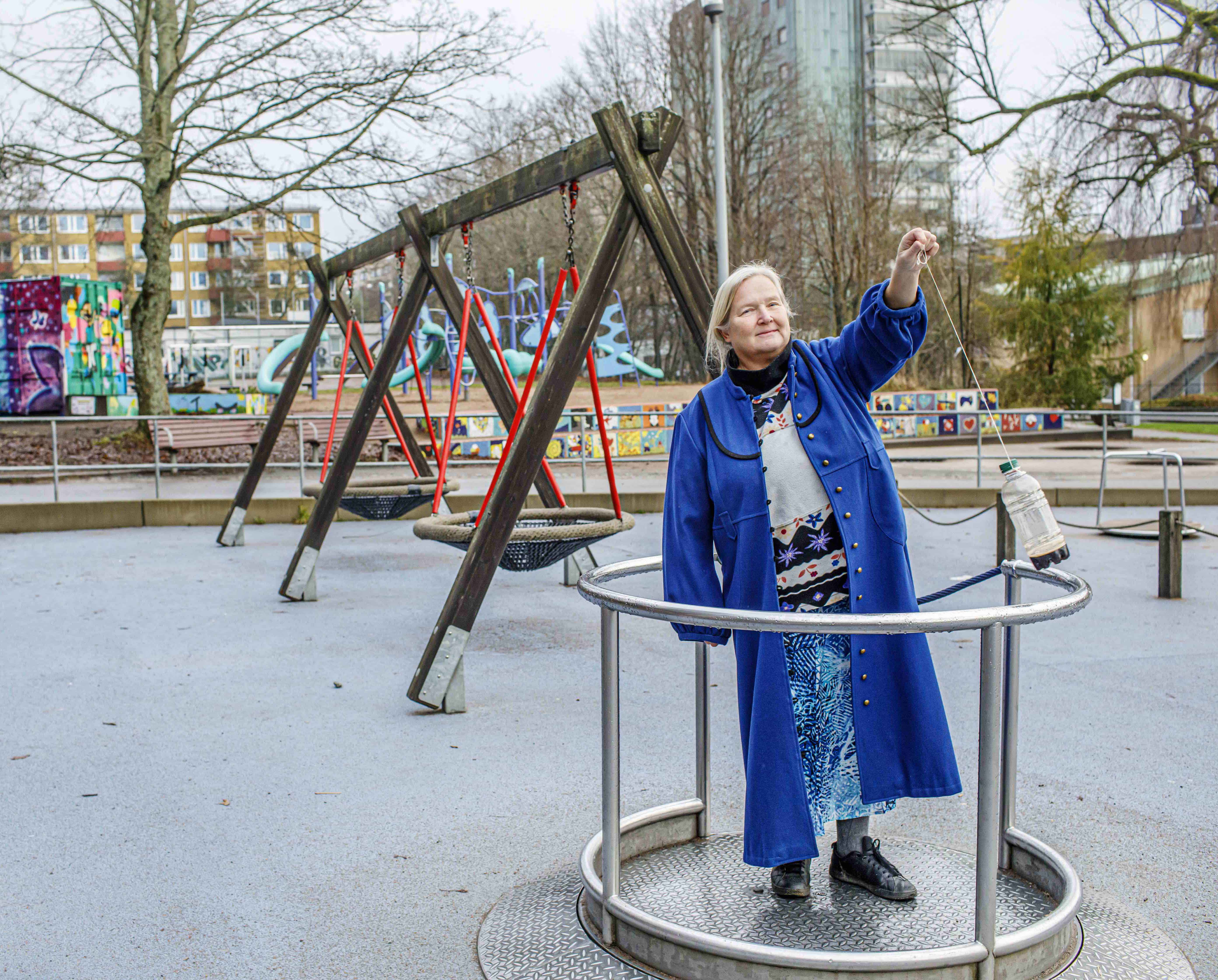2. Foreword#
Demonstrations – creating excitement and memorable experiences
From my own undergraduate studies, I recall several spectacular demonstrations, including gyros, van der Graaf experiments and Tesla coils. As a new lecturer, after many years as a computational atomic physicist, I asked to be shown the equipment – after all, I knew it was there. I also learned about smaller demonstrations that could be used for station labs with small groups or for a mini science-center for visiting classes. Sometimes I created assignments for small groups to perform a couple of demonstrations for the rest of the class. When suitable, I brought equipment to problem-solving classes to let students experience it hands-on, when they needed a short break from the math.

Fig. 2.1 Treasures hidden in the cupboard#
Looking around the demonstration room in the department, I see a lot of stuff that I have no idea about how to use. I have learned that the two enthusiastic lecturers I first encountered as a young undergraduate had spent a lot of time building and collecting materials to use for lecture demonstrations. I have also learned that many of my current colleagues in the department are unaware of the treasures hidden in the cupboards, and would not know how to integrate the demonstrations in their teaching. To them, access to this book will be very helpful!
The book emphasizes the importance of listening to all students’ thoughts before providing answers. I have found that this works well even for a large lecture hall, where students’ different ways of describing a phenomenon can be elicited using peer instruction, when students vote use clickers, phones or even colored papers, and then discuss predictions and outcomes with their neighbors.
This book provides a rich treasure chest of examples to surprise and inspire students and to challenge and develop their understanding of physics.
Ann-Marie Pendrill
Prof. em.
University of Gothenburg and Lund university

Fig. 2.2 Ann-Marie Pendrill doing physics on a playground [].
Photo: Emelie Asplund#
